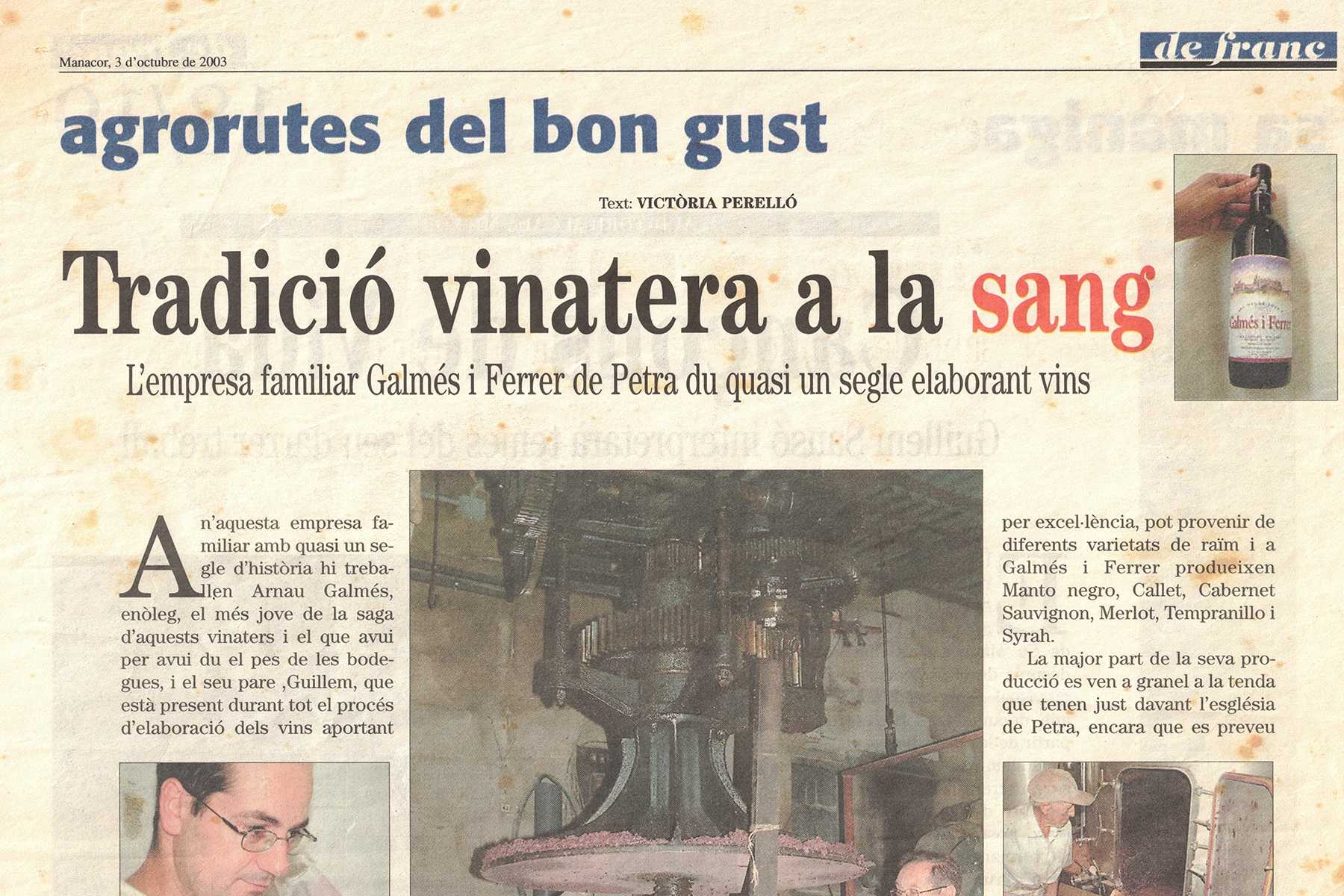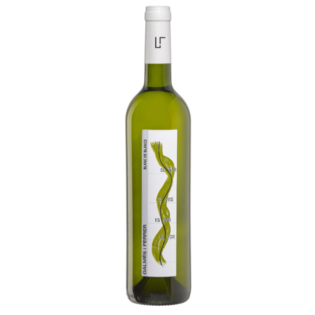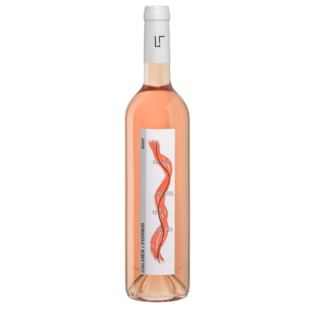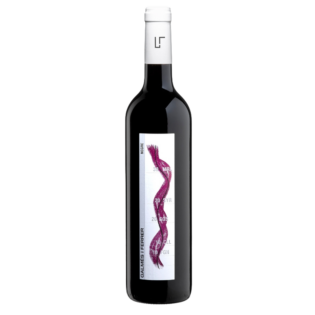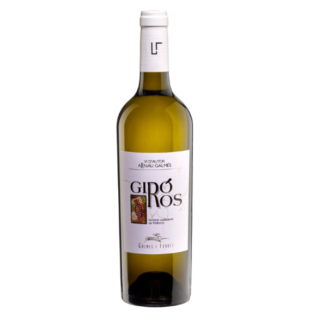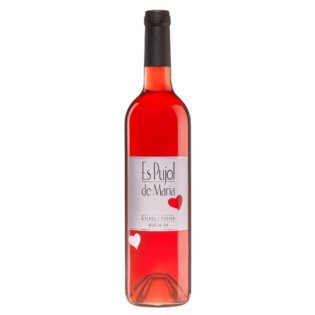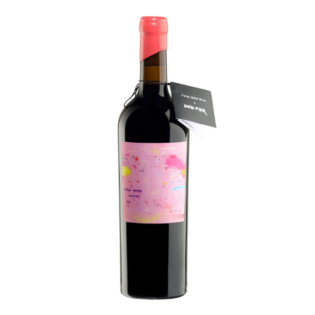Tradició vinatera a la sang
T r a d i c i ó v i n a t e r a a l a s a n g
An’aquesta empresa familiar amb quasi un segle d’história hi treballen Arnau Galmés, enóleg, el mes jove de la saga d’aquests vinaters i el que avuil per avui du el pes de les bodegues, i el seu pare, Guillem, que está present durant tot el procés d’elaboració dels aportant amb la seva experiència tot el que la tradició de fer vi conserva i molta memòria ja que el raïm es trepitjava i quan era un vertader suïcidi ficar-se dins els dipòsits de fusta ja que aquestes concentraven gran quantitats d’anhíbrid carbònic que es detectava ficant una vela dins l’interior, si aquesta s’apagava més valia qeu no hi baixes ningú ja que no hi havia oxigen i la mort per asfixia era una probabilitat bastant alta.
L'empresa familar Galmés i Ferrer de Petra du quasi un segle elaborant vins
En el moment en què arribem a les bodegues, recentment ampliades, compremen 1000 metres quadrats. i equipades amb nova maquinària, es disposen a posar a funcionar la premsa, una joia que tal i con ens explica Guillem Galmés té uns cent anys i quasi coincideix amb les primeres installacions de corrent elèctrica al poble»
A Galmés i Ferrer es produeixen uns 120.000 litres per any, entre el rosat, els negres i el blanc. El negre, el vi de Mallorca per excel·lència, post provenir de diferents varietats de raïm i a Galmés i Ferrer produeixen Manto negro, Callet, Cabernet Sauvignon, Merlot, Tempranillo i Syrah.
La major part de la seva producció es ven a granel a la tenda que tenen just davant l’església de Petra, encara que es preveu que en un curt termini s’ubiqui definitivament a la part alta de les bodegues. Per altre banda unes partides seleccionades de la seva produciió anual són embotellades unes 15.000 botelles actualment, i es preveu que al soterrani de la recent ampliada bodega descansin sucs que es destinaran a un nombre determinat de botes per envellir el vi i fer reserves o bé criances, aquesta iniciativa ja s’està de fet posant en marxa.
Poc a poc i amb molta feina les Bodegues petreres de Galmés i Ferrer s’han anat podrem gaudir d’aquests nous allotjaments on s’ubicaran el cent per cent dels seus diferents departaments, el laboratori, la tenda, els soterranis per la conservació i l’envelliments dels vins i on es troben els dipòsits per la fermentació i conservació, tal i com ens afirma Aarnau Galmés «seguim pensant que val més poca cosa ben feta que no molta i d’escassa qualitat»

On occasion, the winemaker may decide to leave them in if the grapes themselves contain less tannin than desired. This is more acceptable if the stems have ‘ripened’ and started to turn brown. If increased skin extraction is desired, a winemaker might choose to crush the grapes after destemming.
Wine is one of the most civilized things in the world and one of the most natural things of the world that has been brought to the greatest perfection, and it offers a greater range for enjoyment and appreciation than, possibly, any other purely sensory thing.
Ernest Hemingway Tweet
Removal of stems first means no stem tannin can be extracted. In these cases the grapes pass between two rollers which squeeze the grapes enough to separate the skin and pulp, but not so much as to cause excessive shearing or tearing of the skin tissues. In some cases, notably with «delicate» red varietals such as Pinot noir or Syrah, all or part of the grapes might be left uncrushed (called «whole berry») to encourage the retention of fruity aromas through partial carbonic maceration.
The Grapes
The quality of the grapes determines the quality of the wine more than any other factor. Grape quality is affected by variety as well as weather during the growing season, soil minerals and acidity, time of harvest, and pruning method. The combination of these effects is often referred to as the grape’s terroir.
Grapes are usually harvested from the vineyard from early September until early November in the northern hemisphere, and mid February until early March in the southern hemisphere.
In some cool areas in the southern hemisphere, for example Tasmania, harvesting extends into May. The most common species of wine grape is Vitis Vinifera, which includes nearly all varieties of European origin. The most common species of wine grape is Vitis Vinifera, which includes nearly all varieties of European origin.

Manual harvesting is the hand-picking of grape clusters from the grapevines. In the United States, some grapes are picked into one- or two-ton bins for transport back to the winery. Manual harvesting has the advantage of using knowledgeable labor to not only pick the ripe clusters but also to leave behind the clusters that are not ripe or contain bunch rot or other defects. This can be an effective first line of defense to prevent inferior quality fruit from contaminating a lot or tank of wine.
Destemming is the process of separating stems from the grapes. Depending on the winemaking procedure, this process may be undertaken before crushing with the purpose of lowering the development of tannins and vegetal flavors in the resulting wine. Single berry harvesting, as is done with some German Trockenbeerenauslese, avoids this step altogether with the grapes being individually selected.
Crushing is the process when gently squeezing the berries and breaking the skins to start to liberate the contents of the berries. Destemming is the process of removing the grapes from the rachis (the stem which holds the grapes).
In traditional and smaller-scale wine making, the harvested grapes are sometimes crushed by trampling them barefoot or by the use of inexpensive small scale crushers. These can also destem at the same time. However, in larger wineries, a mechanical crusher/destemmer is used. The decision about destemming is different for red and white wine making. Generally when making white wine the fruit is only crushed, the stems are then placed in the press with the berries. The presence of stems in the mix facilitates pressing by allowing juice to flow past flattened skins.

